List of All Nikon Cameras as of 2023 + Brief Reviews
No camera manufacturer is perfect, but there’s no denying that Nikon has an amazing lineup of cameras at the moment. Beginner or professional, DSLR or mirrorless – chances are good that there’s a Nikon camera targeted toward your needs.
Today, I’ll compare every single Nikon camera available as of 2023 and explain what you need to know about each one. I’ve tested all of these Nikon cameras myself (yes, really!) as part of my job at Photography Life. So, I have a good understanding of each camera’s strengths and weaknesses.
Mục lục bài viết
Understanding Nikon Cameras
DX vs FX
The first thing you need to know about Nikon cameras is that they are divided into two distinct groups: DX and FX.
This simply refers to the camera’s sensor size. Sensor size determines image quality more than any other feature of the camera, especially something trivial like the number of megapixels. It’s why every current DSLR on the market will crush a smartphone in image quality.
- DX is smaller: 23.5 × 15.6 mm
- FX is larger: 35.9 × 23.9 mm
(As you can see, FX is about 1.53× larger per dimension, which results in an area of about 2.34× the size.)
So, you’ll get better image quality with FX cameras. But they also tend to cost more.
That said, both DX and FX are much larger than Nikon’s point-and-shoot camera sensors. Those are just 6.2 × 4.6 mm in size (about the same as a smartphone, actually slightly bigger).
Compared to that, FX sensors are a whopping 30× larger in area.
- Read more at Nikon DX vs FX
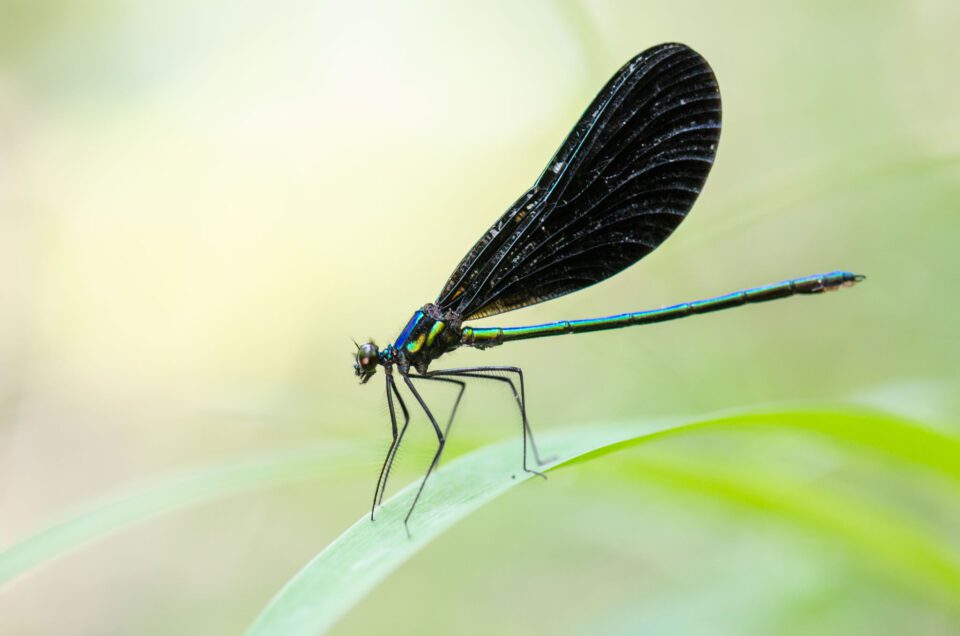 NIKON D7000 + 105mm f/2.8 @ 105mm, ISO 1250, 1/100, f/3.5
NIKON D7000 + 105mm f/2.8 @ 105mm, ISO 1250, 1/100, f/3.5
Taken at ISO 1250 with the Nikon D7000, a discontinued DX camera announced in 2010. Any current Nikon DX and FX camera has excellent image quality. So do most of the older ones.
DSLR vs Mirrorless
Right now, Nikon is pouring a ton of energy into its full-frame mirrorless lineup. However, they have such a long history of making DSLRs that the DSLR lineup is arguably more refined at this point.
In terms of image quality, there is no difference between Nikon’s DSLR and mirrorless FX cameras. They’re all excellent. Instead, the mirrorless/DSLR differences are more subtle:
- Mirrorless advantages: Smaller and lighter, more modern features, electronic viewfinder, and access to an amazing lineup of Nikon Z mirrorless lenses.
- DSLR advantages: Better value, better autofocus system, optical viewfinder, tried-and-tested design, and access to a much larger lineup of native lenses.
If you’re still not sure, here’s a rough guideline: Nikon’s mirrorless cameras are better for travel photography right now, and arguably better for landscapes as well. For portraiture and event photography, there are pros and cons to both systems, and neither is necessarily ahead. For dedicated wildlife and action photography, Nikon’s DSLRs still have the advantage today, although the gap is narrowing.
- Read more at DSLR vs Mirrorless Cameras
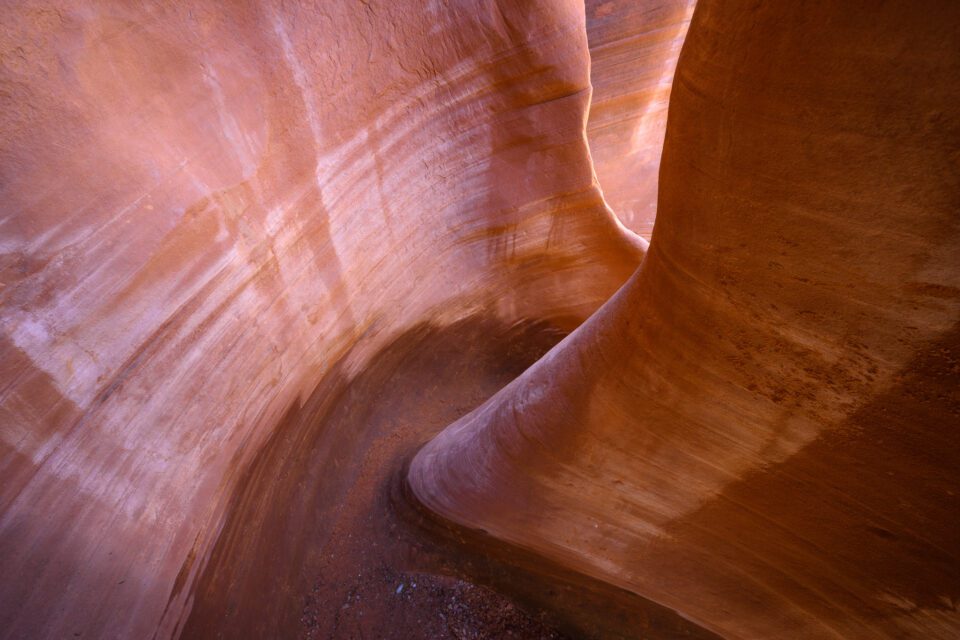 NIKON Z 7 + NIKKOR Z 14-30mm f/4 S @ 14mm, ISO 200, 1/5, f/16.0
NIKON Z 7 + NIKKOR Z 14-30mm f/4 S @ 14mm, ISO 200, 1/5, f/16.0
For travel photography and hiking, it’s nice to carry along a lighter mirrorless kit like the Nikon Z series. Captured handheld in a slot canyon in Utah.
Compatibility with AF-D lenses
One last thing I’d like to point out is that some Nikon cameras won’t autofocus with older AF-D type Nikon lenses.
Specifically, the cheapest cameras on this list – the Nikon D3500 and Nikon D5600 – do not have a built-in autofocus motor. The same is true of the Nikon Z mirrorless cameras with the FTZ and FTZ II adapters.
On these cameras, you can still use any of Nikon’s current AF-S or AF-P lenses with autofocus. But if you have AF-D glass (or a more unusual AF-I supertelephoto), you’ll be stuck with manual focus.
It’s not a big deal for most photographers. Some of Nikon’s AF-D lenses are excellent bargains, but many have been overhauled optically in a newer, better AF-S version. Still, if you’re thinking about using AF-D glass, you should consider one of Nikon’s compatible cameras instead.
 NIKON D800E + 18-35mm f/3.5-4.5 AF-D @ 18mm, ISO 100, 1/50, f/11.0
NIKON D800E + 18-35mm f/3.5-4.5 AF-D @ 18mm, ISO 100, 1/50, f/11.0
Taken with the older AF-D version of the Nikon 18-35mm f/3.5-4.5. This lens will not autofocus with many of Nikon’s current cameras, nor will any other AF-D lens.
Now let’s take a look at the specific Nikon cameras in the company’s lineup:
DSLR Cameras
Nikon D3500
We’ll start with Nikon’s entry-level DSLR, the Nikon D3500. This camera retails for $600 in theory (including the kit lens), but Nikon is no longer selling it new in most markets as of 2023. However, I’m including it here because there is no replacement in Nikon’s DSLR lineup for the D3500, and there probably never will be. It remains Nikon’s most current entry-level DSLR.
Here’s a quick look at the specifications:
- Sensor size: DX
- Resolution: 24.2 megapixels
- Autofocus points: 11
- Frame rate: 5 FPS
- LCD type: Fixed, non-touchscreen
- Max video specs: 1920×1080, 60p
- Battery life: 1550 photos
- Control layout: Basic
- Memory cards: 1 SD
- AF-D lenses: Manual focus only
- Weight w/ battery and card: 415 g (14.6 oz)
- Dimensions (W×H×D): 124 × 97 × 70 mm (4.9 × 3.8 × 2.8 in.)
- List Price: $600 (including kit lens)
- Announced: August 2018
Nikon’s purpose with this camera is to hook people in the world of Nikon DSLRs at an attractive price. Despite being the least expensive camera on this list, it’s actually quite a good one. This is the top camera I recommend for many of my friends if they want to get into photography.
The biggest selling point of the Nikon D3500 is its amazing camera sensor – the 24 megapixel DX beauty. This sensor is just as good as the other DX cameras on this list (even the D500 that costs $1500). And it’s not far behind the much more expensive FX cameras in image quality.
The biggest downside of the Nikon D3500 is that it doesn’t have very many advanced features or controls. For example, there is not a single customizable “Function” button on the D3500, unlike every other camera on this list. The D3500’s autofocus system, LCD, and video specifications are all out of date compared to many of Nikon’s other options.
In short – the D3500 is an amazing budget camera, but it has some missing features that advanced photographers may be annoyed about.
Pros:
- Great value
- Excellent image quality
- Small and lightweight
- When priced at $450, an excellent value
Cons:
- More basic control layout
- Minimal customization available
- Old 11-point viewfinder autofocus system
- Few advanced features: no touchscreen, no 4K video, no AF-D autofocus compatibility, etc.
- When priced at $600, a bit more expensive than it should be
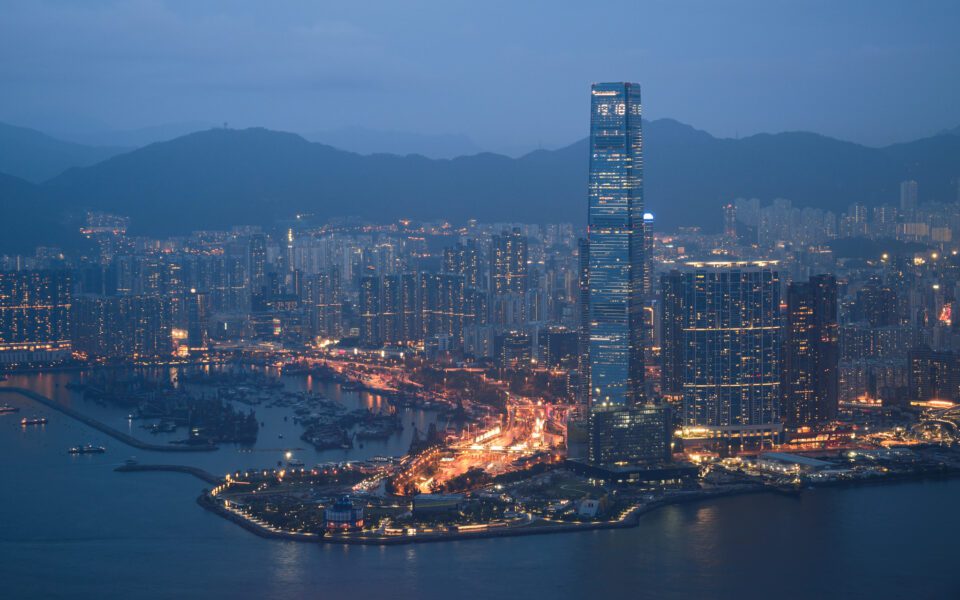 NIKON D3500 + 18-105mm f/3.5-5.6 @ 52mm, ISO 100, 1.3 seconds, f/6.3
NIKON D3500 + 18-105mm f/3.5-5.6 @ 52mm, ISO 100, 1.3 seconds, f/6.3
Nikon D5600
One step above the D3500 is the Nikon D5600. It’s still an entry-level DSLR – “prosumer” at most – but it justifies its $800 price (including a kit lens) with a better autofocus system and a tilt-flip touchscreen.
Also (a small secret) the D5600 often goes on sale for $550, including a kit lens, around the holidays. That puts it in extreme budget territory and makes for an excellent buy. I’d wait until it goes on sale to purchase one, if you haven’t already. You can check the current price here.
The specifications:
- Sensor size: DX
- Resolution: 24.2 megapixels
- Autofocus points: 39
- Frame rate: 5 FPS
- LCD type: Tilt-flip touchscreen
- Max video specs: 1920×1080, 60p
- Battery life: 970 photos
- Control layout: Basic
- Memory cards: 1 SD
- AF-D lenses: Manual focus only
- Weight w/ battery and card: 465 g (16.4 oz)
- Dimensions (W×H×D): 124 × 97 × 70 mm (4.9 × 3.8 × 2.8 in.)
- List Price: $800 (including kit lens)
- Announced: November 2016
The D5600 still has a limited control layout (only one command dial, for example) – but at least it has a Function button you can customize. I use mine to control ISO, which speeds things up in the field.
Both the Nikon D3500 and Nikon D5600 have identical camera sensors with equally amazing image quality. That’s something Nikon really knows how to get right no matter the level of camera.
- Read more in our Nikon D5600 review
- And if you have this camera, you’ll like our recommended settings guide
As you can see, the D5600 is a good choice for first-time DSLR buyers who want a few more features than the Nikon D3500 delivers. It’s also a nice backup camera for professional photographers.
Pros:
- Tilt-flip touchscreen
- Excellent image quality
- Small and lightweight
- Great value when on sale for $550 with a lens
Cons:
- Basic control layout
- No AF-D autofocus compatibility
- When priced at $800 with a lens, not the best value
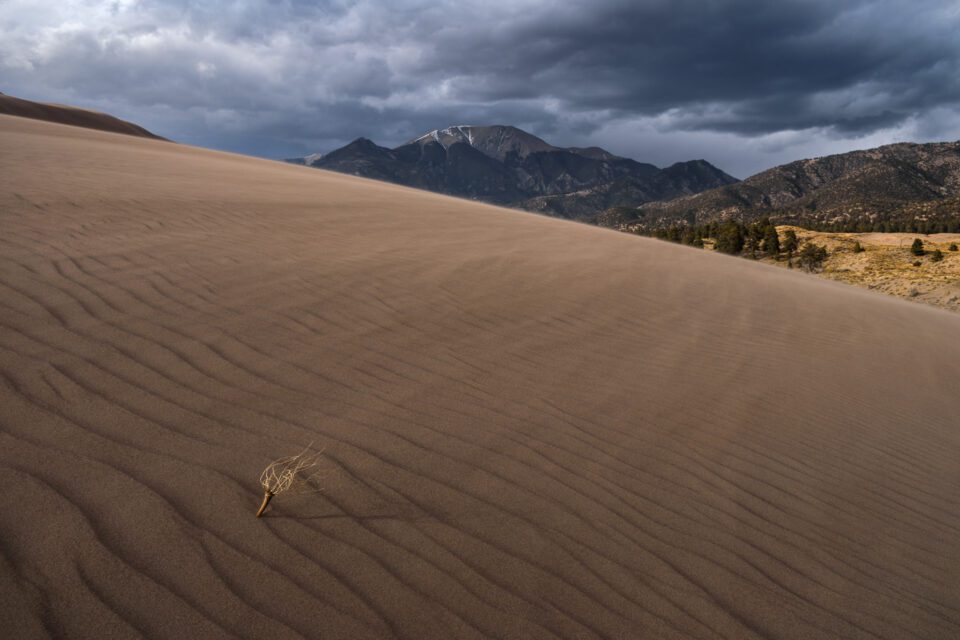 NIKON D5600 + 18-55mm f/3.5-5.6 @ 18mm, ISO 100, 1/200, f/8.0
NIKON D5600 + 18-55mm f/3.5-5.6 @ 18mm, ISO 100, 1/200, f/8.0
Nikon D7500
The next step in Nikon’s lineup is an important one – the Nikon D7500. This camera has a much more advanced control system and better build quality, two things that pro photographers will find very useful.
The D7500 sells for $1000 body only – though the current price fluctuates – plus at least another $200 when you factor in the price of a lens. Here are the important specs:
- Sensor size: DX
- Resolution: 20.9 megapixels
- Autofocus points: 51
- Frame rate: 8 FPS
- LCD type: Tilting touchscreen
- Max video specs: 3840×2160 (4K), 30p
- Battery life: 950 photos
- Control layout: Advanced
- Memory cards: 1 SD
- AF-D lenses: Autofocus compatible
- Weight w/ battery and card: 720 g (25.4 oz)
- Dimensions (W×H×D): 136 × 104 × 73 mm (5.4 × 4.1 × 2.9 in.)
- List Price: $1000 (body only)
- Announced: April 2017
Aside from its more advanced build – including two command dials – the Nikon D7500 is priced higher to reflect the greater amount of data it can process at a time. This includes the ability to shoot 8 FPS photography as well as filming 4K video. Plus, its 51-point autofocus system does a very good job tracking subjects across the frame.
- Our Nikon D7500 review covers all this at length
- For existing D7500 users, here’s our camera settings guide
Who is the Nikon D7500 for? The target audience is sports and wildlife photographers on a moderate budget. However, it’s also a good choice for pro photographers looking to buy an advanced backup camera with more features than the D3500 and D5600.
Pros:
- Advanced controls and significant customization options
- Great 51-point autofocus system and solid 8 FPS shooting
- 4K video
- Tilting touchscreen
- Best-in-class high ISO performance for a DX-size camera sensor
Cons:
- Single memory card slot
- At $900, noticeably more expensive than the D3500 and D5600, though still not a bad value
- Larger, heavier camera than the entry-level DSLRs
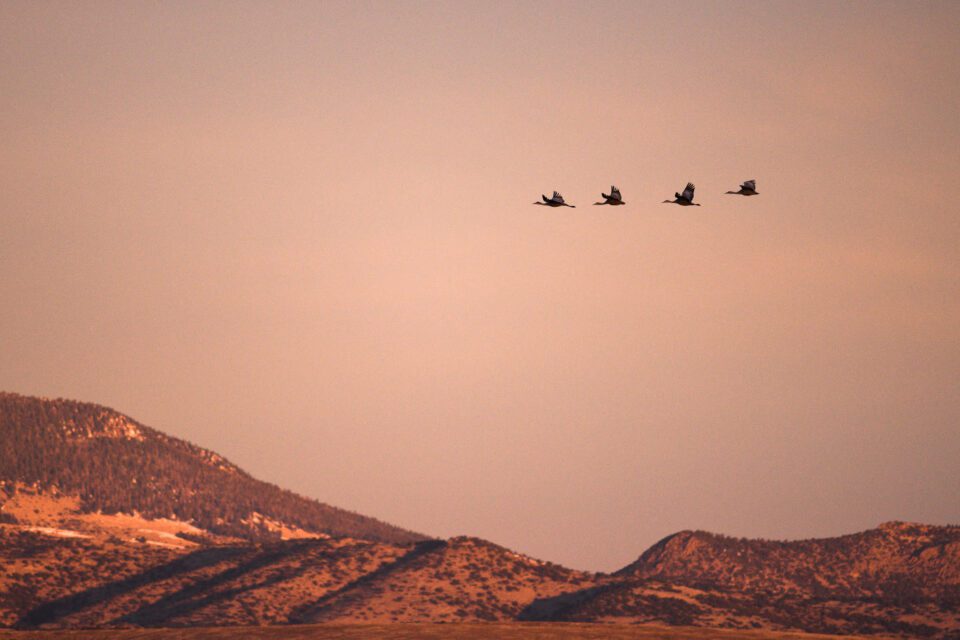 NIKON D7500 + 300mm f/4 @ 300mm, ISO 720, 1/800, f/4.0
NIKON D7500 + 300mm f/4 @ 300mm, ISO 720, 1/800, f/4.0
Nikon D500
The first truly “pro” camera on this list, the Nikon D500, is also Nikon’s most expensive DX camera at $1500. However, even this camera is starting to be hard to find in stock new as of 2023, so you may need to buy it used.
Photographers waited years for the Nikon D500. Some grew so tired of waiting that they jumped ship to Canon or another manufacturer. Others held out – and they weren’t disappointed. Here are the D500’s key specifications:
- Sensor size: DX
- Resolution: 20.7 megapixels
- Autofocus points: 153
- Frame rate: 10 FPS
- LCD type: Tilting touchscreen
- Max video specs: 3840×2160 (4K), 30p
- Battery life: 1240 photos
- Control layout: Professional
- Memory cards: 1 XQD and 1 SD
- AF-D lenses: Autofocus compatible
- Weight w/ battery and card: 860 g (30.3 oz)
- Dimensions (W×H×D): 147 × 115 × 81 mm (5.8 × 4.5 × 3.2 in.)
- List Price: $1500 (body only)
- Announced: January 2016
The most important points to note are the autofocus system (153 points) and the frame rate (10 FPS). And – even though it’s not in the specifications I listed above – one of the huge selling points for the Nikon D500 is its buffer capacity.
You can take a whopping 200 photos in a row before the D500 locks up (lossless compressed 14-bit RAW). Even the Nikon D7500, which doesn’t have a bad buffer by any means, locks up after 50 shots.
- We gave the Nikon D500 great marks in our review
- And we explained how to use it in our recommended settings guide
Taking everything into consideration, the Nikon D500 is one of the best cameras on the market for sports and wildlife photographers today. That’s even more true when price is a concern.
Pros:
- Pro-level build quality, controls, and customization options
- Nikon’s best autofocus system, 153 points
- 10 FPS shooting with an excellent 200 image buffer
- Tilting touchscreen
- Best-in-class high ISO performance for a DX-size camera sensor
Cons:
- Landscape and portrait photographers may prefer a full-frame camera for a similar price ($1500)
- Larger and heavier than any of Nikon’s other current DX cameras
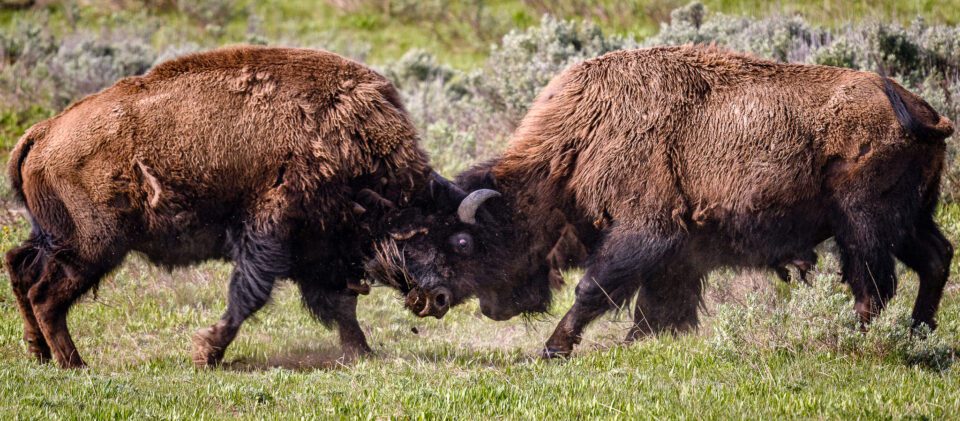 NIKON D500 + 300mm f/4 @ 420mm, ISO 400, 1/500, f/5.6
NIKON D500 + 300mm f/4 @ 420mm, ISO 400, 1/500, f/5.6
Nikon D610
Moving on to Nikon’s full-frame FX cameras, we have the the $1500 Nikon D610 (although once again, a camera that Nikon has now discontinued from most markets).
This camera is often overlooked today. I get the sense that even Nikon wants you to forget it exists. After all, it was only released to sweep the D600 dust issue under the rug.
Even worse, it currently sells for exactly the same price as the newer, higher-end Nikon D750. There is no good reason why someone would buy the D610 rather than the D750 at the same price (though the D610 is more reasonable on the used market).
Still, Nikon doesn’t have a single dud in its lineup. Even though the D610 is priced too high when sold new, it’s still a good camera:
- Sensor size: FX
- Resolution: 24.3 megapixels
- Autofocus points: 39
- Frame rate: 6 FPS
- LCD type: Fixed, non-touchscreen
- Max video specs: 1920×1080, 30p
- Battery life: 900 photos
- Control layout: Advanced
- Memory cards: 2 SD
- AF-D lenses: Autofocus compatible
- Weight w/ battery and card: 850 g (30.0 oz)
- Dimensions (W×H×D): 141 × 113 × 82 mm (5.6 × 4.5 × 3.2 in.)
- List Price: $1500 (body only)
- Announced: October 2013
The biggest liability is autofocus. The D610 has Nikon’s old 39-point focusing system (same as the entry-level D5600).
That said, the D610 still has a great 24 megapixel FX sensor. Photographers who don’t care as much about autofocus – say, landscape photographers – will appreciate the sensor’s quality and not care as much about its other limitations.
So, who should get the Nikon D610? At the moment, if you’re buying new, no one. It’s the same price as the D750, a better camera. But if you’re buying used and find a good deal, landscape and portrait photographers would be very happy with the D610 overall.
Pros:
- Advanced controls and significant customization options
- Amazing full-frame image quality
Cons:
- Bought new, the same price as the D750, a more advanced camera
- 39-point autofocus system is outdated for the price
- Relatively old camera with fewer modern features (non-tilting rear LCD, no 4K video, no touchscreen, 1/4000 max shutter speed, 1/200 max sync speed, etc.)
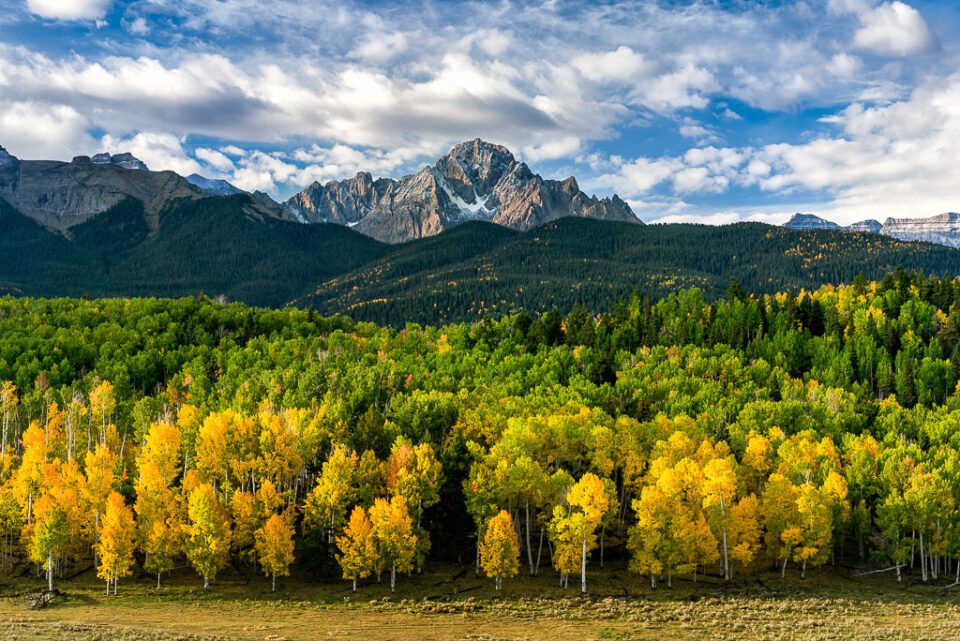 NIKON D610 + 24-70mm f/2.8 @ 58mm, ISO 100, 1/10, f/11.0
NIKON D610 + 24-70mm f/2.8 @ 58mm, ISO 100, 1/10, f/11.0
Nikon D750
One of Nikon’s best all-around cameras – though also one which has been replaced and discontinued – is the Nikon D750. The reason why I’m mentioning it anyway is that it represents one of the best values a photographer can find on the used market, where it’s selling for about $700.
The Nikon D750 was released back in 2014 and has since been replaced by the D780. Here are the D750’s specs:
- Sensor size: FX
- Resolution: 24.3 megapixels
- Autofocus points: 51
- Frame rate: 6.5 FPS
- Base ISO: 100
- LCD type: Tilting, non-touchscreen
- Max video specs: 1920×1080, 60p
- Battery life: 1230 photos
- Control layout: Advanced
- Memory cards: 2 SD
- Weight w/ battery and card: 840 g (29.6 oz)
- Dimensions (W×H×D): 141 × 113 × 78 mm (5.6 × 4.5 × 3.1 in.)
- List Price: $1500 (body only)
- Announced: September 2014
Compared to the D610, the D750 has a more advanced autofocus system, 60 FPS video (rather than 30 FPS), a tilting LCD, and slightly better battery life. Image quality is the same.
What are the D750’s drawbacks? On one hand, as good as its 51-point autofocus system is for sports, a few cameras in Nikon’s lineup have a newer 153-point system that’s even better (though the only inexpensive one of the three is a crop-sensor camera, the Nikon D500). Other than that, it lacks a touchscreen, 4K video, and some of Nikon’s newer features like focus-stack shooting.
The D750’s biggest audience is probably the portrait/wedding crowd, but I’d also strongly consider it for landscape photographers who dabble in other genres. Especially bought used, it’s a really hard camera to beat.
Pros:
- Advanced controls and significant customization options
- Amazing full-frame image quality
- Tilting screen
- Great 51-point autofocus system
- Amazing value at about $700 used
Cons:
- No touchscreen
- No 4K video
- None of Nikon’s newest features, since it was released in 2014
- Jack-of-all-trades camera; specialized choices in Nikon’s lineup can be better for specific uses
Nikon D780
The camera that replaced the Nikon D750 is called the D780, and it has some fantastic features. To be specific, it fixes almost all of the Nikon D750’s issues and adds some of Nikon’s newest (mirrorless-inspired) tech. The Nikon D780 is currently selling for about $2300 new (check current price) and $1700 used. Here are the specs:
- Sensor size: FX
- Resolution: 24.5 megapixels
- Autofocus points: 51
- Frame rate: 7 FPS mechanical shutter, 12 FPS in live view with electronic shutter and 12-bit RAW
- Base ISO: 100
- LCD type: Tilting touchscreen
- Max video specs: 4K up to 30 FPS, 1080p up to 120 FPS
- Battery life: 2260 photos
- Control layout: Advanced
- Memory cards: 2 SD, UHS-II compatible
- Weight w/ battery and card: 840 g (29.6 oz)
- Dimensions (W×H×D): 143.5 × 115.5 × 76.0 mm (5.6 × 4.5 × 3.0 inches)
- List Price: $1500 (body only)
- Announced: January 2020
Compared to the D750, the Nikon D780 has a touchscreen, 4K video, marginally better image quality at high ISOs, and many of Nikon’s newest bells and whistles. These include things like extended 900 second shutter speeds, focus stack shooting, and better live view autofocus.
For portrait or wedding photographers who want Nikon’s best all-around camera at the moment, the Nikon D780 is the way to go. It’s a bit newer than most of Nikon’s cameras, so it isn’t selling as cheap as some of the others, but the price premium isn’t without good reason. The D780 is an excellent camera.
- Check out our Nikon D780 review
- And if you already have this camera, you may want to read our recommended Nikon D780 settings
Nikon could have technically bumped up some of the D780’s “top-line” specs like the sensor resolution and maximum frame rate, but other than that, there’s almost nothing to complain about with this camera. If you want a jack-of-all-trades DSLR, the D780 is the way to go.
Pros
- Advanced controls and significant customization options
- Amazing full-frame image quality
- Tilting touchscreen
- Great 51-point autofocus system
- Most of Nikon’s newest features, borrowed from Nikon’s mirrorless lineup
- Fixes almost all the major problems of the Nikon D750
Cons
- A bit on the pricy side because it’s relatively new, at $2300 body-only
- Despite six years since the D750, the D780 still has “only” 24 megapixels and has bumped up the frame rate via the viewfinder by just 0.5 FPS (from 6.5 to 7 FPS)
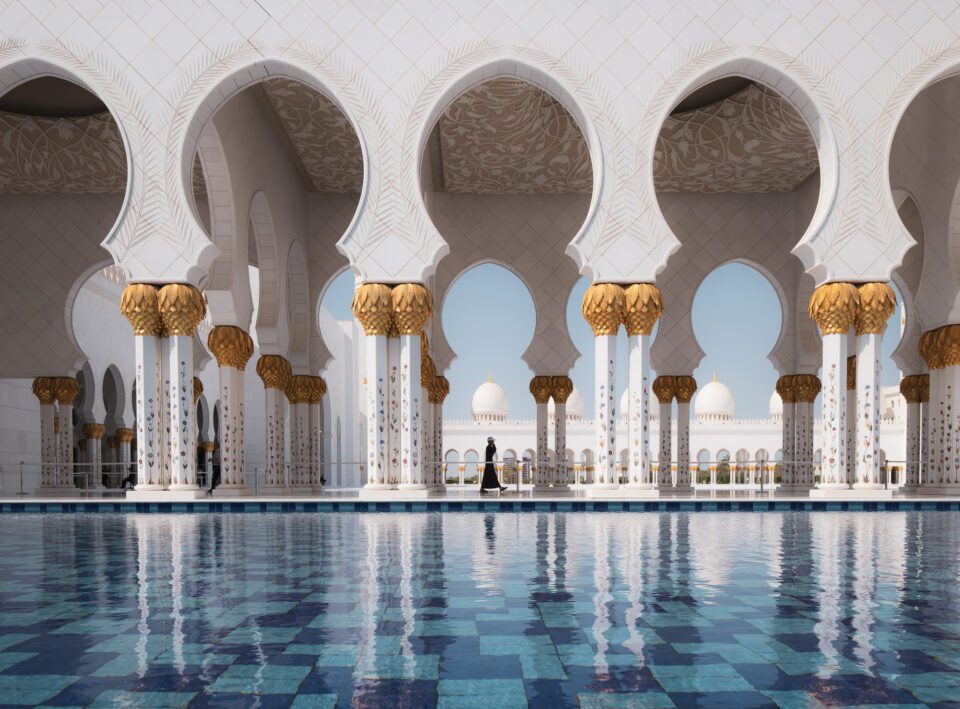 NIKON D780 + 17-35mm f/2.8-4E @ 25mm, ISO 100, 1/400, f/9.0
NIKON D780 + 17-35mm f/2.8-4E @ 25mm, ISO 100, 1/400, f/9.0
Nikon Df
This retro-themed DSLR is a bit of a weird one, but it has a dedicated following even today. Here are the Nikon Df’s specifications, which may remind you of the D610, even though the Df is much more expensive:
- Sensor size: FX
- Resolution: 16.2 megapixels
- Autofocus points: 39
- Frame rate: 5.5 FPS
- LCD type: Fixed, non-touchscreen
- Max video specs: No video capabilities
- Battery life: 1400 photos
- Control layout: Professional, retro
- Memory cards: 1 SD
- AF-D lenses: Autofocus compatible
- Weight w/ battery and card: 765 g (27.0 oz)
- Dimensions (W×H×D): 144 × 110 × 67 mm (5.7 × 4.3 × 2.6 in.)
- List Price: $2750 (body only)
- Announced: November 2013
The Nikon Df is a beautiful camera with a great design and excellent manual controls. Plus, in low light, its 16-megapixel sensor has slightly better high ISO performance than any other Nikon camera at the moment. But for the launch price of $2750, it was always a tough sell. Even on the used market, it’s closer to $1000, which I think is a bad deal compared to a used D750.
Again, Nikon doesn’t have any real duds in its lineup – just a couple cameras that are more expensive than they should be on the new market. The Df is one of them. But if it ticks the right boxes for you, don’t let me stop you. If nothing else, the Nikon Df holds a unique spot in Nikon’s lineup.
- Our Nikon Df review covers this camera’s head-vs-heart dilemma
I’m not the Df’s target audience, I admit – but I also think its real target audience is shrinking more and more as the years go by. It’s aimed largely at portrait photographers, as well as certain wedding and street shooters. But options like the D750 and D780 target the same users, arguably with much better features overall.
Pros:
- Beautiful design and pro-level retro controls
- Best-in-class high ISO performance for a full frame camera
- Small and light for an FX DSLR
- Exposure meter coupling with pre-Ai Nikon lenses
Cons:
- Old 39-point autofocus system
- No video capabilities at all
- Single memory card slot
- Limited to 5.5 FPS
- Few advanced features: No touchscreen, non-tilting rear LCD, shutter speed limit of 1/4000 second, flash sync limit of 1/200 second, etc.
- Camera sensor is only 16 megapixels (lowest in Nikon’s lineup today) – a benefit for some photographers, though most will consider it a drawback
- Overpriced even on the used market
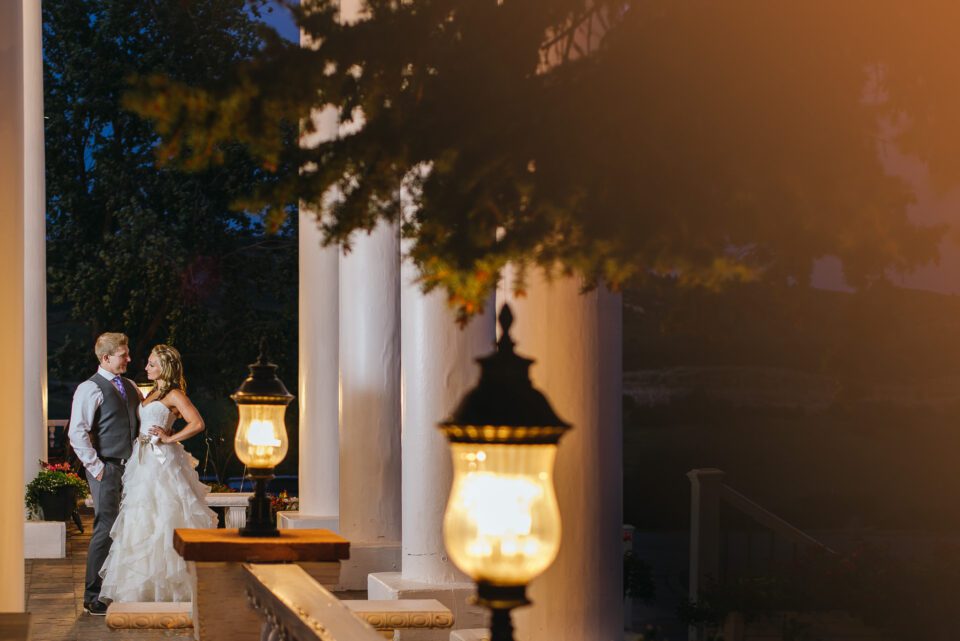 NIKON Df + 50mm f/1.8 @ 50mm, ISO 400, 1/25, f/2.8
NIKON Df + 50mm f/1.8 @ 50mm, ISO 400, 1/25, f/2.8
Nikon D850
Now we arrive at one of the best cameras of all time, the Nikon D850. We ranked it #1 in our list of today’s top DSLR cameras, with good reason. This $3000, 45-megapixel FX camera is a monster.
The specs:
- Sensor size: FX
- Resolution: 45.7 megapixels
- Autofocus points: 153
- Frame rate: 7 FPS, or 9 FPS when using Nikon’s battery grip
- LCD type: Tilting touchscreen
- Max video specs: 3840×2160 (4k), 30p
- Battery life: 1840 photos
- Control layout: Professional
- Memory cards: 1 SD, 1 XQD
- AF-D lenses: Autofocus compatible
- Weight w/ battery and card: 1005 g (35.5 oz)
- Dimensions (W×H×D): 146 × 124 × 79 mm (5.8 × 4.9 × 3.1 in.)
- List Price: $3000 (body only)
- Announced: July 2017
It has Nikon’s top 153-point autofocus system, the company’s highest resolution 45-megapixel sensor, a surprisingly high frame rate of 7 FPS (9 FPS with the battery grip), and nearly every one of Nikon’s top features. It commands a $3000 price for good reason (check the current price here).
Then again, $3000 is a lot of money to spend on a camera, no matter how good it is. The good news is that Nikon makes cameras at half the price which do 90% of the D850’s job. For most photographers, the Nikon D750 coupled with a good lens is a more practical purchase.
But if you want the best of the best, you know where to look.
- The Nikon D850 got 4.9 out of 5 stars in our review, the highest of any camera yet
- Here, we explain our recommended camera settings to get as much as possible out of the D850
Ostensibly, the Nikon D850 is targeted at landscape photographers. However, plenty of sports and wildlife photographers accept the camera’s slightly lower frame rate in exchange for such remarkable image quality. For everything but the most rapid-fire sports and wildlife applications – or in cases where light weight is critical – the D850 is as close to perfect as any camera today.
Pros:
- Pro-level build quality, controls, and customization options
- Best-in-class image quality with 45 megapixel sensor and base ISO 64
- Surprisingly good 7 FPS shooting (9 FPS with battery grip)
- Nikon’s best autofocus system, 153 points
- Tilting touchscreen
- 4K video
Cons:
- Expensive at $3000, though you get what you pay for
- Larger and heavier than most other Nikon cameras
 NIKON D850 + 14mm f/1.8 @ 14mm, ISO 64, 1/160, f/16.0
NIKON D850 + 14mm f/1.8 @ 14mm, ISO 64, 1/160, f/16.0
Nikon D6
As amazing as the Nikon D850 is, it’s still not the flagship camera in Nikon’s lineup. That honor goes to the $6500 Nikon D6 – an extreme sports and action camera with Nikon’s top autofocus system, a 14 FPS maximum frame rate, and a 20 megapixel FX sensor.
Here are the D6’s specifications:
- Sensor size: FX
- Resolution: 20.8 megapixels
- Autofocus points: 105
- Frame rate: 14 FPS
- LCD type: Fixed touchscreen
- Max video specs: 3840×2160 (4K), 30p
- Battery life: 3580 photos
- Control layout: Top-tier professional
- Memory cards: 2 CFexpress
- AF-D lenses: Autofocus compatible
- Weight: 1270 g (Body-only)
- Dimensions (W×H×D): 160 × 163 × 92 mm
- List Price: $6500
- Announced: February 2020
It may seem expensive, but pros who photograph the Olympics don’t care. The D6’s specifications are unparalleled among Nikon cameras for action photography. And its near-invincible build quality holds up well in almost every environment that isn’t underwater.
That said, the Nikon D6 is so specialized that many photographers don’t even have it on their radar. If you told me I had $6500 to spend on Nikon DSLRs, I’d buy a D850 for landscapes and a D500 for wildlife, then put the rest of the money toward lenses.
Of course, if you need it, you need it. You probably already have it, and you’ll pre-order whatever flagship comes next.
Pros:
- Best-in-class build quality, controls, and customization options
- Best-in-class high ISO performance
- 14 FPS shooting and 200 image buffer
- Nikon’s best autofocus system, 105 points, all cross-type
- Rear LCD is touchscreen
- 4K video
Cons:
- Nikon’s most expensive camera at $6500
- Very big, heavy, specialized DSLR
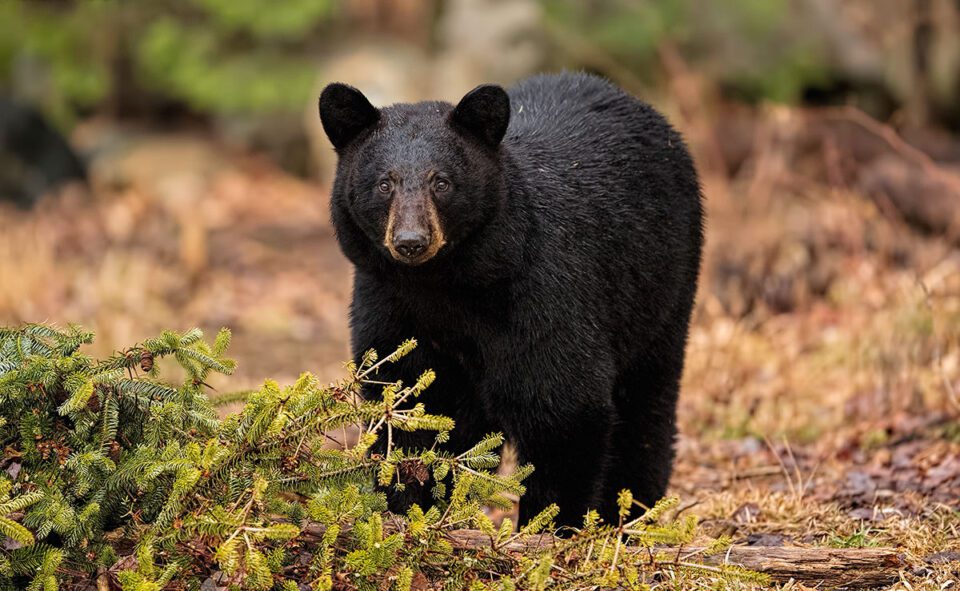 NIKON D5 (the similar predecessor of the D6) @ 600mm, ISO 4000, 1/640, f/4.0
NIKON D5 (the similar predecessor of the D6) @ 600mm, ISO 4000, 1/640, f/4.0
Copyright Robert Andersen
Mirrorless Cameras
Nikon Z6
It took the company years to get here, but in 2018 Nikon finally released a series of full-frame mirrorless cameras to compete with the likes of Sony. However, the Z6 has been superseded by the Nikon Z6 II, and Nikon is no longer selling it new as of 2023 in most markets.
In terms of specifications, the Nikon Z6 is quite good:
- Sensor size: FX
- Resolution: 24.5 megapixels
- Autofocus system: 273-point hybrid PDAF
- Frame rate: 12 FPS (12-bit RAW), 9 FPS (14-bit RAW)
- Base ISO: 100
- LCD type: Tilting touchscreen
- Max video specs: 3840×2160 (4k), 30p
- Battery life: 310 photos
- Control layout: Professional
- Memory cards: 1 XQD
- Weight w/ battery and card: 675 g (23.8 oz)
- Dimensions (W×H×D): 134 × 101 × 68 mm (5.3 × 4.0 × 2.7 in.)
- List Price: $1800 (body only)
- Announced: August 2018
Note the weight of the Z6: 675 grams (1 lb, 7.8 oz). By comparison, the Nikon D780 weighs 840 grams (1 lb 13.7 oz). Even the Df, Nikon’s lightest FX DSLR, is 90 grams (3.2 oz) heavier than the Z6. This is one of the big advantages of mirrorless cameras over DSLRs.
In addition, the Z6 has Nikon’s new Z lens mount, allowing you to use the camera with any of Nikon’s excellent mirrorless lenses. And you can still use Nikon’s existing DSLR lenses (the F-mount glass) on the Z6, by using Nikon’s FTZ or FTZ II adapters. Though, when you do, you’ll lose a decent bit of the Z6’s weight savings compared to DSLRs.
The Nikon Z6’s closest DSLR competitor is the Nikon D780. The two are actually extremely similar, but the Z6 has the expected benefits of a mirrorless camera, such as light weight, an excellent electronic viewfinder, and in-body image stabilization. The D780 has dual memory card slots, a better battery life, and a slightly better autofocus system. The two cameras have the exact same image quality. See our D780 vs Z6 comparison for more details.
What about focusing? Although the Z6’s autofocus system has a whopping 273 focusing points, it’s not as good as Nikon DSLRs for tracking moving subjects. (Interestingly, for photographing nonmoving subjects, the Z6 is actually slightly faster and more accurate to focus than Nikon DSLRs.)
Overall? Travel photographers and videographers will love it, while I’d stick to the D780 for portrait and event photography because of the better autofocus tracking. But you can’t go wrong either way.
The Z6 also sells for remarkably good prices on the used market – we’ve seen it as low as $1150 at sites like Fred Miranda and KEH. At that price, it’s almost impossible to beat.
Pros:
- Pro-level build quality, controls, and customization options
- Best-in-class high ISO performance
- Tilting touchscreen
- Nikon’s newest features, including in-body image stabilization
- 4K video with excellent specifications
- Small and lightweight
- Good value
- Surprisingly good 12 FPS limit in 12-bit RAW and 9 FPS in 14-bit RAW
- Access to Nikon’s newest mirrorless lenses
Cons:
- Autofocus system, though excellent for nonmoving subjects, struggles with tracking fast action
- Single memory card slot
- Requires an adapter to use F-mount lenses
- Battery life of just 310 photos with the EVF (though this isn’t worse than typical Nikon DSLRs, when the DSLR is used in live view only)
Nikon Z6 II
Despite all the Nikon Z6’s great points, it’s still showing its age a bit given that it was part of Nikon’s first generation of Z-series mirrorless cameras. Since then, Nikon has released the Z6 II, which fixes some of the Nikon Z6’s biggest flaws (and is probably responsible for most of the Z6’s amazing used prices)!
Here are the Z6 II’s key specifications:
- Sensor size: FX
- Resolution: 24.5 megapixels
- Autofocus system: 273-point hybrid PDAF
- Frame rate: 14 FPS (12-bit RAW), 10 FPS (14-bit RAW)
- Base ISO: 100
- LCD type: Tilting touchscreen
- Max video specs: 3840×2160 (4k), 60p
- Battery life: 340 photos
- Control layout: Professional
- Memory cards: 1 CF Express, 1 SD (UHS-II compatible)
- Weight w/ battery and card: 705 g (1.55 lbs)
- Dimensions (W×H×D): 134 × 101 × 70 mm (5.3 × 4.0 × 2.8 in.)
- List Price: $2000 (body only)
- Announced: October 2020
The Z6 II is currently selling for $2000, but you should check the current price here, because it’ll start selling for some good discounts once the newness fades away.
Compared to the Z6, the Z6 II adds some much-requested features like better autofocus tracking, dual memory card slots, and 4K video at 60 FPS. Its autofocus still isn’t perfect at tracking fast-moving subjects, but otherwise, it’s an all-around fantastic camera.
- Check out our Nikon Z6 II review for more info
- We also have a guide to the best camera settings for the Nikon Z6 II
The only issue right now is price. Given that the Nikon Z6 II was announced so recently, it’s not possible to find it selling used at such competitive prices. But $2000 new is not bad at all, and actually puts the Z6 II cheaper than the Nikon D780, despite the Z6 II being the better camera in many ways.
Here are the camera’s pros and cons:
Pros:
- Pro-level build quality, controls, and customization options
- Best-in-class high ISO performance
- Tilting touchscreen
- Nikon’s newest features, including in-body image stabilization
- 4K video with excellent specifications, including 60 FPS for slow motion
- Small and lightweight
- Good value new at $2000
- Surprisingly good 14 FPS limit in 12-bit RAW and 10 FPS in 14-bit RAW
- Access to Nikon’s newest mirrorless lenses
- Dual memory card slots
Cons:
- Autofocus system, though excellent for nonmoving subjects, could be better at tracking fast action
- Requires an adapter to use F-mount lenses
- Battery life rated to just 340 photos with the EVF (though this isn’t worse than typical Nikon DSLRs, when the DSLR is used in live view only)
- Used prices are high at the moment because the camera is so new
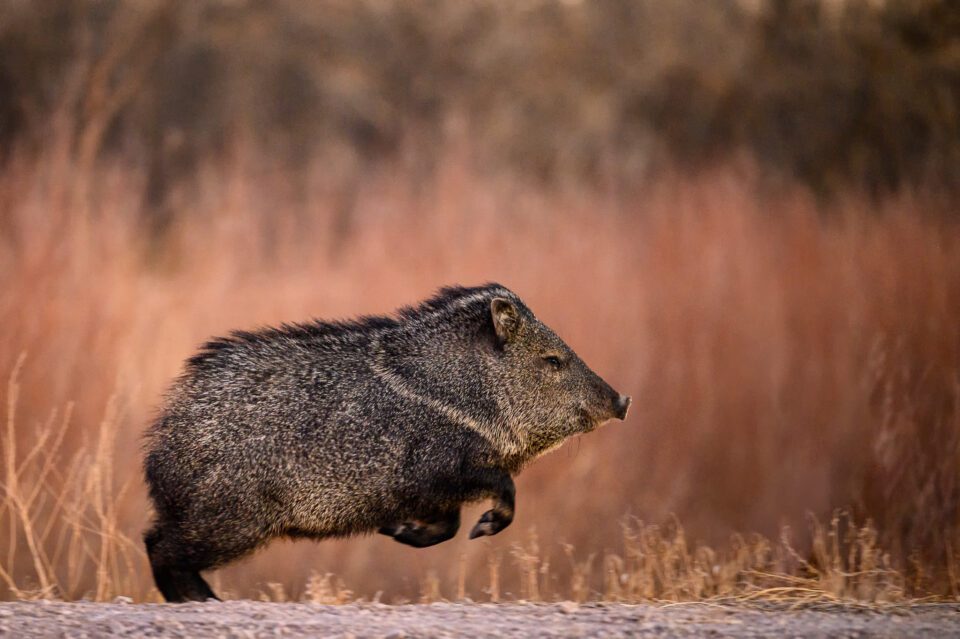 NIKON Z6 II + NIKKOR Z 70-200mm f/2.8 VR S @ 200mm, ISO 3200, 1/500, f/2.8
NIKON Z6 II + NIKKOR Z 70-200mm f/2.8 VR S @ 200mm, ISO 3200, 1/500, f/2.8
Nikon Z7
The high-resolution counterpart to the Nikon Z6 is the Nikon Z7. Like the Nikon Z6, the Z7 has been discontinued in most markets and may be hard to find new. However, the used prices are pretty good. The Nikon Z7 has been replaced by the Z7 II.
Nikon Z7 specifications:
- Sensor size: FX
- Resolution: 45.7 megapixels
- Autofocus system: 493-point hybrid PDAF
- Frame rate: 9 FPS (12-bit RAW), 8 FPS (14-bit RAW)
- Base ISO: 64
- LCD type: Tilting touchscreen
- Max video specs: 3840×2160 (4k), 30p
- Battery life: 330 photos
- Control layout: Professional
- Memory cards: 1 XQD
- Weight w/ battery and card: 675 g (23.8 oz)
- Dimensions (W×H×D): 134 × 101 × 68 mm (5.3 × 4.0 × 2.7 in.)
- List Price: $3000 (body only)
- Announced: August 2018
Other than slight differences here and there, the Nikon Z7 is the same as the Nikon Z6, just with a 45 megapixel sensor rather than 24 MP. They even have the same camera body and button layout. You can check our Z6 vs Z7 comparison to see how similar they really are.
My recommendation – and I say this as a Nikon Z7 owner – is to get the Z6. The extra megapixels are overkill for most photographers, and even a drawback for some (taking up twice the hard drive space).
Still, certain specialized photographers will find the Z7 a great camera for their needs. If you’re a landscape or architectural photographer who prints large, there’s no denying that the Z7 is a strong camera. In many ways, it’s like a mirrorless D850 – albeit not as refined of a camera overall. (For the more refined version, you’ll want to check out the Nikon Z7 II that’s up next.)
Pros:
- Pro-level build quality, controls, and customization options
- Best-in-class image quality with 45 megapixel sensor and base ISO 64
- Tilting touchscreen
- Nikon’s newest features, including in-body image stabilization
- 4K video with excellent specifications
- Small and lightweight
- Surprisingly good 9 FPS limit in 12-bit RAW and 8 FPS in 14-bit RAW
- Access to Nikon’s newest mirrorless lenses
Cons:
- Autofocus system, though excellent for nonmoving subjects, could be better at tracking fast action
- Single memory card slot
- Requires an adapter to use F-mount lenses
- Fairly expensive at $3000, or around $2400 used. Nikon D850 is similar in price, but with a better autofocus system and a larger native lens lineup
- Battery life of just 330 photos (though this isn’t worse than typical Nikon DSLRs, when the DSLR is used in live view only)
Nikon Z7 II
Nikon’s current top-of-the-line mirrorless camera is the Nikon Z7 II. It sells new for $3000 (check current price) and used for… well, about $3000, thanks to how new the camera is. (You can probably find it for $2800 or so if you look hard enough.)
Here are the Z7 II’s specifications:
- Sensor size: FX
- Resolution: 45.7 megapixels
- Autofocus system: 493-point hybrid PDAF
- Frame rate: 10 FPS (12-bit RAW), 9 FPS (14-bit RAW)
- Base ISO: 64
- LCD type: Tilting touchscreen
- Max video specs: 3840×2160 (4k), 60p
- Battery life: 360 photos
- Control layout: Professional
- Memory cards: 1 CF Express, 1 SD (UHS-II compatible)
- Weight w/ battery and card: 705 g (1.55 lbs)
- Dimensions (W×H×D): 134 × 101 × 70 mm (5.3 × 4.0 × 2.8 in.)
- Price: $3000 (body only)
- Announced: October 2020
As you can see, it’s very similar to the Nikon Z6 II, although it has a higher resolution sensor of 45 rather than 24 megapixels, and a base ISO of 64 rather than 100.
If that description sounds familiar, it’s because the Z7 II is also similar to the prior generation Z7. The two cameras share a sensor (and thus the same image quality) and have almost identical builds. The reason to get the Z7 II are for new features like a larger buffer, slightly better autofocus, dual memory card slots, and 4K video at 60 FPS.
It may seem like it’s not worth the money over the Z7, and maybe for you it’s not. But before you make that decision, you may want to check out our Nikon Z7 vs Z7 II comparison. Nikon made a lot of behind-the-scenes improvements on the Z7 II that make it a more comprehensive camera than the Z7.
Pros:
- Pro-level build quality, controls, and customization options
- Best-in-class image quality with 45 megapixel sensor and base ISO 64
- Tilting touchscreen
- Nikon’s newest features, including in-body image stabilization
- 4K video with excellent specifications, including 60 FPS for slow motion
- Small and lightweight
- Surprisingly good 9 FPS limit in 12-bit RAW and 8 FPS in 14-bit RAW
- Access to Nikon’s newest mirrorless lenses
- Dual memory card slots
Cons:
- Autofocus system, though excellent for nonmoving subjects, could be better at tracking fast action
- Requires an adapter to use F-mount lenses
- Used prices aren’t a significant discount yet, thanks to how recent the camera is
- Battery life of just 360 photos (though this isn’t worse than typical Nikon DSLRs, when the DSLR is used in live view only)
 NIKON Z 7 II + NIKKOR Z 14-24mm f/2.8 S @ 14mm, ISO 64, 1/125, f/5.6
NIKON Z 7 II + NIKKOR Z 14-24mm f/2.8 S @ 14mm, ISO 64, 1/125, f/5.6
Nikon Z5
The least expensive full-frame camera in Nikon’s lineup is the Z5. Depending on the sale, we’ve seen its new prices dip down as low as $1000, which is absurd for a camera that was released not that long ago in mid-2020. (Check current price here.) The Z5’s specifications are as follows:
- Sensor size: FX
- Resolution: 24.3 megapixels
- Autofocus system: 273-point hybrid PDAF
- Frame rate: 4.5 FPS
- Base ISO: 100
- LCD type: Tilting touchscreen
- Max video specs: 3840×2160 (4k), 30p, but with a 1.7x crop
- Battery life: 470 photos
- Control layout: Advanced
- Memory cards: 2 SD (UHS-II compatible)
- Weight w/ battery and card: 675 g (1.49 lbs)
- Dimensions (W×H×D): 134 × 101 × 70 mm (5.3 × 4.0 × 2.8 in.)
- Price: $1400 (body only), but frequently on sale for less
- Announced: July 2020
This camera is an amazing value, full stop. Compared to the much more expensive Nikon Z6 II – which is already a good value camera – the Z5 gives up some high-FPS shooting, loses the camera’s top-panel LCD, has a 1.7x crop in 4K video, and otherwise is basically the same.
While it does use a slightly older 24 megapixel sensor compared to the one on the Z6 II, the image quality differences are very small. Only at ultra-high ISOs will you notice any difference, and even then, only if you’re pixel-peeping.
Used, you might find the Z5 for about $800 – a great deal normally, although if it’s on sale for $1000 new, it’s probably better to go new. Either way, for photographers who want to get a full-frame camera with modern features at a low price, it’s hard to beat the Z5.
Pros:
- Advanced build quality, controls, and customization options
- Great 24 megapixel sensor with full-frame image quality
- Tilting touchscreen
- Nikon’s newest features, including in-body image stabilization
- Small and lightweight
- Access to Nikon’s newest mirrorless lenses
- Extremely good value, especially when on sale for $1000, or used for $800
Cons:
- Autofocus system, though excellent for nonmoving subjects, could be better at tracking fast action
- Low maximum frame rate of 4.5 FPS
- 4K video has a 1.7x crop, which can make it hard to film at wide angle focal lengths
- Requires an adapter to use F-mount lenses
- Battery life of just 470 photos (though this isn’t worse than typical Nikon DSLRs, when the DSLR is used in live view only)
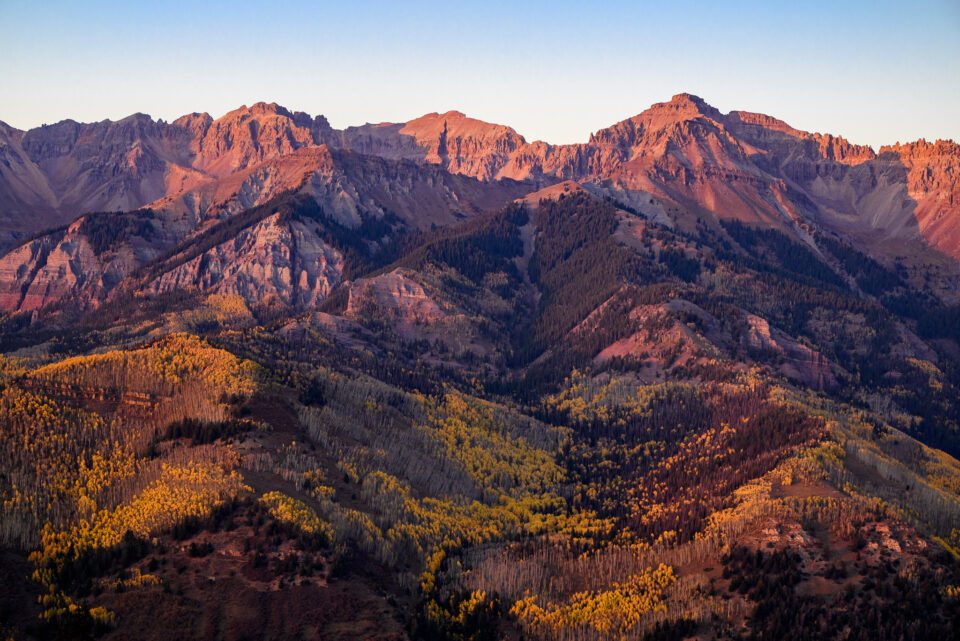 NIKON Z 5 + NIKKOR Z 24-200mm f/4-6.3 VR @ 61mm, ISO 400, 1/125, f/8.0
NIKON Z 5 + NIKKOR Z 24-200mm f/4-6.3 VR @ 61mm, ISO 400, 1/125, f/8.0
Nikon Z9
Nikon’s flagship camera right now is the Z9, a mirrorless camera with a built-in grip and some of the most impressive features of any camera on the market today. Its price of $5500 may seem high (check current price), but it’s actually much less than expected and cheaper than usual for a Nikon flagship. Meanwhile, the specifications are incredible:
- Sensor size: FX
- Resolution: 45.7 megapixels
- Autofocus system: 493-point hybrid PDAF with deep learning and 9-subject classification
- Frame rate: 20 FPS (RAW), 30 FPS (JPEG), 120 FPS (11-megapixel JPEG)
- Base ISO: 64
- LCD type: Dual axis tilting touchscreen
- Max video specs: 7680×4320 (8K), 30p (will be 60p with a firmware update this year)
- Battery life: 700 photos
- Control layout: Top tier professional
- Memory cards: 2 CF Express
- Weight w/ battery and card: 1340 g (2.95 lbs)
- Dimensions (W×H×D): 149 × 149.5 × 90.5 mm (5.9 × 5.9 × 3.6 inches)
- Price: $5500 (body only)
- Announced: October 2021
There is very little that the Nikon Z9 can’t do aside from cook a piece of toast. It has 20 FPS raw shooting with no limitations, a truly massive buffer, Nikon’s newest and best autofocus system, 8K video, and every advanced feature Nikon could throw at it.
It’s even a good camera for landscape photography despite the emphasis on sports/wildlife features, thanks to the base ISO of 64 and the high resolution 45.7-megapixel sensor. There are also some great astrophotography features on the Z9 not found on other Nikon cameras, like the ability to autofocus on the Milky Way.
- See our Nikon Z9 review here
Depending on what you need to do, the Nikon Z9 isn’t simply the best Nikon camera today, but possibly the best camera on the market from any manufacturer, period.
Pros:
- Best-in-class build quality, controls, and customization options
- Best-in-class image quality with 45 megapixel sensor and base ISO 64
- Best-in-class autofocus system, frame rate, and buffer
- Dual axis tilting touchscreen
- Nikon’s newest features, including in-body image stabilization
- 8K video with excellent specifications, including 60 FPS for slow motion (to be added in a firmware update)
- Small and lightweight
- Surprisingly good 9 FPS limit in 12-bit RAW and 8 FPS in 14-bit RAW
- Access to Nikon’s newest mirrorless lenses
- Battery life of 700 photos (actually much more in practice) is very good for mirrorless
- Dual memory card slots
- Launch price of $5500 is unusually low for a Nikon flagship, yet doesn’t sacrifice features
Cons:
- Requires an adapter to use F-mount lenses
- Used prices aren’t a significant discount yet, thanks to how recent the camera is (and the Z9 can even be hard to find new)
- Bigger and heavier than a typical mirrorless camera
- $5500 is still expensive, even though a good value for what you get
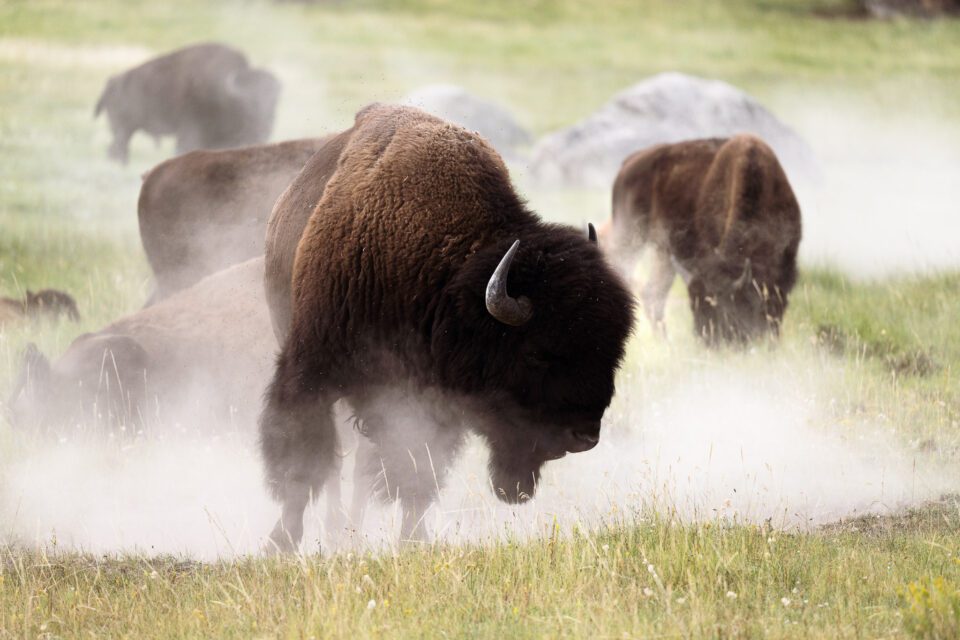 NIKON Z 9 + NIKKOR Z 100-400mm f/4.5-5.6 VR S @ 320mm, ISO 800, 1/1250, f/5.3
NIKON Z 9 + NIKKOR Z 100-400mm f/4.5-5.6 VR S @ 320mm, ISO 800, 1/1250, f/5.3
Nikon Z50
At the moment, Nikon has three Z-series cameras with a DX sensor rather than FX. The first to be released was the Nikon Z50. It’s aimed at a more beginner-oriented audience than the mirrorless cameras above, although it still has some advanced features. Here are the specifications:
- Sensor size: DX
- Resolution: 20.9 megapixels
- Autofocus system: 209-point hybrid PDAF
- Frame rate: 11 FPS
- Base ISO: 100
- LCD type: Tilting touchscreen
- Max video specs: 3840×2160 (4k), 30p
- Battery life: 300 photos
- Control layout: Basic
- Memory cards: 1 SD (UHS-I compatible)
- Weight w/ battery and card: 450 g (0.99 lbs)
- Dimensions (W×H×D): 127 × 94 × 60 mm (5.0 × 3.7 × 2.4 in.)
- Price: $860 (body only)
- Announced: November 2019
The Z50 is roughly between the Nikon D5600 and Nikon D7500 in specifications, which is a pretty good spot to be. It’s also Nikon’s lightest camera at the moment, and the $860 price ($1000 with the 16-50mm kit lens) is pretty reasonable – though we recommend checking the current prices for any discounts. You can find it used for about $650 or so, depending on where you look, and that price is likely to go down before long.
For photographers who want to start using a Nikon Z camera at the lowest price, the Z50 is the way to go. It doesn’t have all the fanciest new features, but it still does a lot of things right.
- Read more in our Nikon Z50 review
- Also check out our Nikon Z50 recommended settings
Nikon is going all-in on its Z system and most likely will keep prioritizing it in the future. So, it’s probably a better investment (in terms of lenses, accessories, and resale value) to go with the Z50 over a comparable DSLR like the D5600.
Pros
- Small and lightweight
- Tilting touchscreen
- High 11 FPS maximum frame rate
- Good eye-tracking autofocus makes for an excellent portrait and family travel camera
- Best-in-class high ISO performance for a DX-size camera sensor
- Access to Nikon’s newest mirrorless lenses
Cons
- Single memory card slot
- No in-body image stabilization
- A bit on the pricy side at $860 body only, since you can buy some full-frame cameras used for similar prices
- Battery life of just 300 photos (though this isn’t worse than typical Nikon DSLRs, when the DSLR is used in live view only)
 NIKON Z 50 + NIKKOR Z DX 16-50mm f/3.5-6.3 VR @ 16mm, ISO 100, 8 seconds, f/5.6
NIKON Z 50 + NIKKOR Z DX 16-50mm f/3.5-6.3 VR @ 16mm, ISO 100, 8 seconds, f/5.6
Nikon Zfc
- Sensor size: DX
- Resolution: 20.9 megapixels
- Autofocus system: 209-point hybrid PDAF
- Frame rate: 11 FPS
- Base ISO: 100
- LCD type: Tilt-flip touchscreen
- Max video specs: 3840×2160 (4k), 30p
- Battery life: 300 photos
- Control layout: Retro
- Memory cards: 1 SD (UHS-I compatible)
- Weight w/ battery and card: 445 g (0.98 lbs)
- Dimensions (W×H×D): 135 × 94 × 44 mm (5.3 × 3.7 × 1.7 in.)
- Price at launch: $960 (body only)
- Announced: June 2021
The Nikon Zfc is very similar to the Nikon Z50. It does have a few improvements – a fully articulating screen, manual exposures up to 900 seconds, and eye AF in video – but the biggest difference is the design. The Zfc has a retro styling with some extra dials on the top of the camera for controlling your exposure settings. It’s also $100 more expensive at $960 (check the current price here).
The pros and cons are very similar to those of the Z50:
Pros
- Small and lightweight
- Tilt-flip touchscreen
- High 11 FPS maximum frame rate
- Good eye-tracking autofocus makes for an excellent portrait and family travel camera
- Best-in-class high ISO performance for a DX-size camera sensor
- Access to Nikon’s newest mirrorless lenses
- Striking retro design with lots of manual dials
Cons
- Single memory card slot
- No in-body image stabilization
- A bit on the pricy side at $960 body only, since you can buy some full-frame cameras used for similar prices
- Battery life of just 300 photos (though this isn’t worse than typical Nikon DSLRs, when the DSLR is used in live view only)
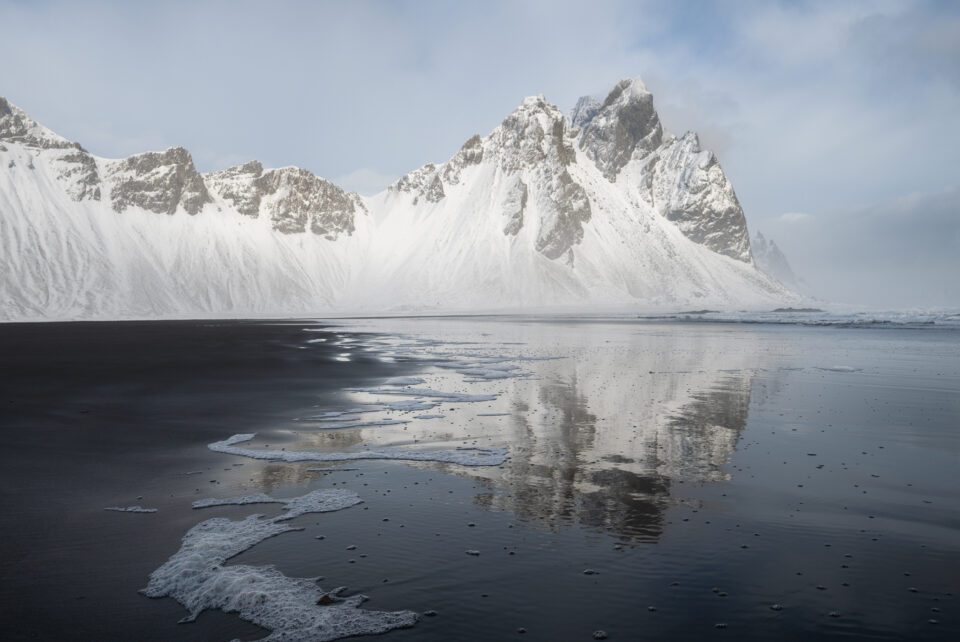 NIKON Z fc + NIKKOR Z 28mm f/2.8 @ 28mm, ISO 100, 1/400, f/8.0
NIKON Z fc + NIKKOR Z 28mm f/2.8 @ 28mm, ISO 100, 1/400, f/8.0
Nikon Z30
- Sensor size: DX
- Resolution: 20.9 megapixels
- Autofocus system: 209-point hybrid PDAF
- Frame rate: 11 FPS
- Base ISO: 100
- LCD type: Tilt-flip touchscreen
- Max video specs: 3840 × 2160 (4K) at 30 FPS; 1080p at 120 FPS
- Battery life: 330 photos
- Control layout: Basic
- Memory cards: 1 SD (UHS-I compatible)
- Weight w/ battery and card: 405 g (0.89 lbs)
- Dimensions (W×H×D): 128 × 74 × 60 mm (5.0 × 2.9 × 2.4 in.)
- Price at launch: $710 (body only)
- Announced: June 2022
The newest consumer-level Nikon Z camera is the Z30. Nikon says it’s aimed at vloggers and on-the-go video shooters, although most of its video features are borrowed from the existing Z50. (Most of its stills features are, too.)
The Z30 is very similar to the Nikon Z50, except it lacks a viewfinder and was announced more than 2.5 years later. Given that, I’d have expected more than a $150 price difference between them. Frankly, the Z30 should be priced about $500 based on its features and timing. Or, Nikon should have added higher-end video features like 10-bit recording, 4:2:2 sampling, and N-log if they wanted to seriously target it at video users.
Pros
- Small and lightweight
- Tilt-flip touchscreen
- High 11 FPS maximum frame rate
- Good eye-tracking autofocus makes for an excellent portrait and family travel camera
- Best-in-class high ISO performance for a DX-size camera sensor
- Access to Nikon’s newest mirrorless lenses
- Some minor unusual video features like a tally light and USB-powered option
Cons
- No viewfinder
- Single memory card slot
- No in-body image stabilization
- At $710 body only, not terribly expensive, but pricier than Nikon’s usual entry-level cameras
- Battery life of just 330 photos (though this isn’t worse than typical Nikon DSLRs, when the DSLR is used in live view only)
Point-and-Shoot Cameras
That’s it for Nikon’s current DSLR and mirrorless interchangeable lens cameras. However, Nikon also has a huge lineup of “Coolpix” branded point-and-shoot compact cameras.
Personally, I wouldn’t get any of these, especially the more expensive ones (a cheaper one can make a good gift for a kid’s first “real” camera). In terms of image quality, these camera sensors are only a hair larger than that of the iPhone X. Not terrible, but you won’t get world-class image quality with them – unlike the DSLRs and mirrorless cameras above.
I’ll only cover the most basic information here, because frankly all of these cameras are becoming less relevant in the smartphone era. Rather than writing separately about each one, here’s a table comparing the main differences between them (with only cameras currently sold new at B&H or Adorama appearing on the list below):
P1000P900B600B500A1000W300W100A10Megapixels16161616161613.216RAW capabilityYesNoNoNoYesNoNoNoOptical zoom125×83×60×40×35×5×3×5×Equivalent focal length (mm)24 to 300024 to 200024 to 144022.5 to 90024 to 84024 to 12030 to 9026 to 130Frame rate (JPEG)7 FPS7 FPS7 FPS7.4 FPS10 FPS7 FPS11 FPS1.2 FPSWaterproofingNoNoNoNoNoYesYesNoViewfinderYesYesNoNoYesNoNoNoLCD typeTilt-flipTilt-flipFixedTiltTiltFixedFixedFixedWeight (with battery and card)1415 g899 g500 g541 g330 g231 g177 g160 gPrice$1000$715$330$260$500$390$160$90
As you can see, the main specification that differs here (aside from price) is zoom capability. The P1000 has a whopping 125× zoom, but it also costs an unreasonably high $1000. The less expensive cameras have smaller and smaller zooms, until you get to the W100 with a diminutive 3× zoom (30mm to 90mm equivalent).
As interesting as the P1000 may look, its crazy 3000mm zoom is beyond overkill for 99% of people. And its image quality isn’t good enough for most photographers, either (just like all the other cameras in the chart above). For a lower price – and less weight – I’d get a DSLR like the D3500 or D5600 instead.
If I had to pick one of these point-and-shoot cameras, I’d go for the A1000, simply because it is the least expensive camera here that can still shoot RAW. That’s the only factor that differentiates image quality among these options. (The 16 vs 13 MP sensor difference is too small to matter.) Still, $500 is pretty expensive for a point-and-shoot with a small sensor. I’d much rather buy it used, where you can find it for about $250.
As for the other cameras here, the cheap Nikon A10 is a good choice to give to a kid for their first camera. And if you’re going on a trip where you’ll need a waterproof camera, the W300 and W100 are better than risking your phone to an underwater case.
Other, Discontinued Cameras
The cameras listed above are all recent Nikon cameras, even though a few of them have been discontinued. But Nikon also has an excellent lineup of older cameras that you can find used, or occasionally refurbished, for great prices.
The discontinued DSLRs I’d pay attention to are as follows:
- Nikon D3200 (or D3300 and D3400) for ultimate low price
- Nikon D5200 (or D5300 and D5500) for better handling and autofocus than the D3000-series, plus a tilt-flip screen
- Nikon D7100 (or D7200) for advanced controls and better autofocus than the D5000-series
- Nikon D810 for exceptional full-frame image quality
- Nikon D5 (or D4 or D4s) for full-frame sports photography at a lower price than the D6. The D3s is also an option if you don’t mind having 12 megapixels
Each one of these cameras does 95% of what Nikon’s current cameras can do, but they cost far less on the used market.
In terms of other discontinued cameras, these are the ones I’d consider:
- Nikon Coolpix B700: A 60× superzoom point-and-shoot with 20.3 megapixels and RAW shooting capability. Pretty cheap used, though bigger than I’d prefer for a “compact” camera.
- Nikon 1 mirrorless cameras: Fairly small sensor (2.7× crop), but still bigger than a point-and-shoot. Good autofocus system, popular as a budget sports/wildlife pick.
- Specifically: Nikon J5 for maximum image quality, Nikon V3 for best autofocus system and frame rate.
- Nikon Coolpix A: Small 16 megapixel camera with a large DX camera sensor. Has a fixed 18.5mm lens (28mm equivalent) rather than a zoom. Good travel backup option.
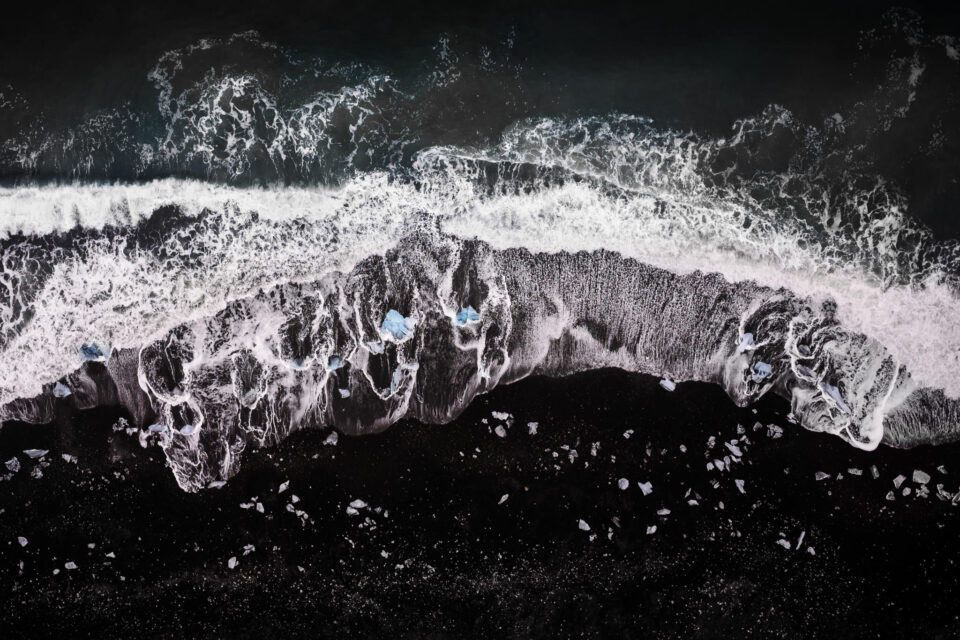 Nikon COOLPIX A @ 18.5mm, ISO 320, 1/1000, f/3.5
Nikon COOLPIX A @ 18.5mm, ISO 320, 1/1000, f/3.5
Film Cameras
All the cameras above are digital, but Nikon has a huge lineup of older film cameras as well.
The last one Nikon ever made new is the F6. Released in 2004, the Nikon F6 is a flagship SLR with 11 autofocus points, 5.5 FPS shooting (8 FPS with a battery grip), and iTTL/high-speed flash sync support.
It’s Nikon’s most advanced film camera ever, and arguably the most advanced 35mm film SLR of any brand. But it was discontinued in late 2020. You can still find it used for about $1000 these days.
However, if you are an existing Nikon user who is considering a Nikon film camera today, I recommend the F100 instead (which sells for roughly $250 used). It has a modern, DSLR-like design and autofocuses with Nikon’s AF-S lenses without a problem. It also allows for semi-automatic modes like aperture priority.
Of course, there is a massive lineup of older Nikon film cameras selling for great prices on the used market right now. It’s impossible to cover all of them here, but suffice to say that you’re in luck if you want a film camera on a budget today (even though prices have been rising slightly in recent years).
Other than that, if none of the Nikon cameras above works for you, I suggest taking a look at other brands.
 Nikon F100 + Kodak Tri-X 400 B&W film
Nikon F100 + Kodak Tri-X 400 B&W film
Conclusion
Nikon’s current camera lineup is pretty extensive, and the company has done a good job overall at positioning each camera well for its target audience. The D3500 is an amazing budget camera, the D500 is a great sports camera for a reasonable price, the Z7 II is an all-around image quality beast – and so on.
This article is not about deciding which one of Nikon’s cameras is the “best.” All of them could be the best for some photographers and totally unnecessary for others. And that’s why Nikon makes so many cameras.
I hope this comparison gave you a good bird’s-eye view of Nikon cameras today, including our takeaway from each review we did at Photography Life. If you have any questions or recommendations about these cameras, please let me know in the comments section below!











